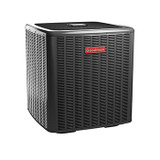Duct Balancing Tips: The Best Ways to Balance Your Ducts
If you've noticed that some rooms in your home are too hot, some are too cold, and some are just right, then this could be a sign that you need to refine and improve the performance of your heating system.
When a house has balanced airflow, this means that every room in the building will receive the same amount of air, ensuring that every area stays at the ideal temperature through all seasons of the year.
Unfortunately, forced-air systems can often go out of balance, which is why it's so important to know the basics of duct balancing to keep your home as comfortable as possible.
How to Balance Airflow in Ducts
Duct balancing is the process of adjusting and measuring the airflow and temperature in an HVAC system. With the help of a professional team or some intuitive tips, you can increase or decrease airflow in specific rooms to improve comfort.
Air duct balancing not only makes sure that you'll always be able to achieve the right temperature in your property, but it could also offer the dual bonus of improving energy efficiency while minimizing utility spending.
So, how can you go about balancing airflow in ducts around your property?
Step 1: Inspect Your Home
Properly balancing your HVAC system can help to make your home more comfortable, while optimizing your system, and reducing your risk of future failures. Additionally, the efficient operation of an air conditioning system can lead to lower utility bills.
To begin, start by evaluating the air flow around your home with a general inspection. There's no need to use any professional or complicated tools for this. All you need to do is walk around your house and pay special attention to any areas that seem too cold, or too warm.
Once you've determined where the most prominent temperature fluctuations are in the property, you can start looking at the registers.
Step 2: Check All Registers are Open and Clear
Make sure that all the registers are open around the house. The air registers on the HVAC system are the vents that look like grills, which help to release cold or warm air into the room. Most registers will come with a small lever that can be used to open or close the vent.
Although air return registers don't feature a lever, it's important to double-check these systems too, to make sure that they haven't been obstructed by any clutter, furniture, curtains or debris that’s fallen into them that are preventing proper air flow.
Step 3: Gather Thermometers
The next step in duct balancing is gathering a handful of thermometers that can be set to the same temperature reading. You can get the thermometers aligned by laying them out together for a few minutes and making a note of any discrepancies.
Tape the thermometers to the walls in each room, away from the cold air return or hot air register. Give it about one hour, then go back and make a note of the readings from each room when the HVAC system is turned on.
Step 4: Use Duct Balancing Dampers
If you notice that one room is hotter, or colder than another, then use duct balancing dampers to adjust the temperature. Partially closing the damper in the duct should have an impact on the amount of hot or cold air that can circulate around the property.
After the position of the dampers has been adjusted, wait an hour before re-checking the room and making a note of the thermometer reading. If the room is back to a regular temperature, then you're done. If it isn't, then close the damper slightly again, and wait for another hour before rechecking the room. The airflow can be slightly adjusted at the register too.
Step 5: Repeat as Necessary
Follow the procedure laid out above in each room throughout your home, closing and opening the dampers and registers until you've achieved the same temperature in every room of the house, or the balance you wanted has been reached. You'll need to keep the thermostat on the furnace at the same temperature while you're conducting the readings.
Once you've achieved the perfect balance, go to the ducts and use a sharpie or permanent marker to mark the space where the damper handle should be when you want to position it for the perfect results. This process can be repeated for the winter season, and for the summer if you find that you get different results at different times of the year.
Recent Posts
-
Trane Central Air System Not Cooling
Struggling with a Trane central air system that won’t cool your home? You’re not alone. In this deta …27th Jun 2024 -
Lennox Central Air System Not Cooling
When your Lennox central air system stops cooling, it not only disrupts your comfort but can also si …27th Jun 2024 -
Goodman Central Air System Not Cooling
When your Goodman central air system is not cooling, it can be frustrating and uncomfortable, especi …20th Jun 2024



